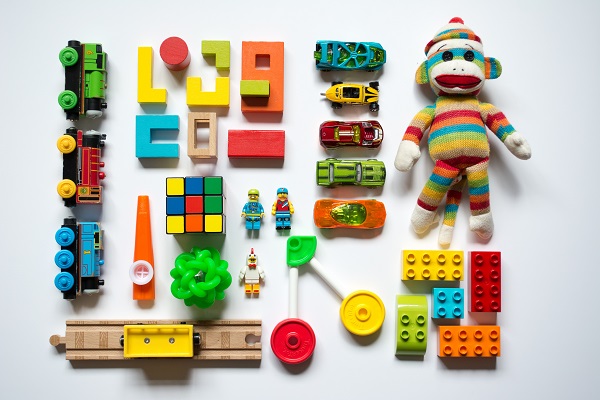
Let me start with a shocking statistic to get you in the holiday mood.
The United States has 3% of the world’s children but buys 40% of all toys sold worldwide.
I know – It’s terrifying!
This season, if you’ve got kids, you’re likely going to have an influx of new gifts and toys, so it’s the perfect time to learn how to help kids wade through their toys and create space for what sparks joy.
The tips below will have you on your way to decreasing your clutter … and increasing your joy.
- Help them identify what they genuinely love. Ask your child, “Does this spark joy?” or “What are your favorite toys”? This question will help them to distinguish between the things they genuinely love and the things they don’t.
- Create a Wish List. Every time your child asks for a toy, say, “Sure! I’ll add it to your wish list.” Then, add it to a Wish List that you’ve created in a notes app like Evernote. This way, you are validating their request without immediately gratifying it. They won’t remember 90% of the things that they’ve asked for, but some things may come up again and again. That’s your “hot list.”
- Institute a “one in, three out” rule. For every new toy they ask for, tell them they will need to let go of THREE. This curtails splurge purchases and ensures that they really want that new toy.
- Prioritize “non-fixed” toys. The book Simplicity Parenting has helpful guidelines for which toys to keep and which to toss. Try to keep “non-fixed” toys, which awaken a child’s imagination. (Think blocks, figurines, craft supplies, etc.) Avoid “fixed” toys”. These are toys that typically do only one thing and don’t spark much creativity (or keep them busy while you’re trying to cook dinner!).
- Consider instituting “fun money.” Each week, our daughter has $5 to spend. It can be on ice cream, visiting a play place, a piece of candy, or a toy. If she doesn’t spend it, it carries over. So when she asks for something, I can say, “let me check your fun money,” which lives in a separate pocket of my wallet. If she has fun money, she can usually get the item. If not, she can’t. It takes the focus away from “my mean mommy who won’t let me have it” to a more neutral place of “oh well, I don’t have enough money.”
Teaching your kids to choose toys wisely and to treasure the toys they have is not something that happens overnight. But you can slowly change the conversation, put some boundaries up and help them curate a collection of toys that spark joy for them and that minimizes clutter for you.
Happy holidays, friends!




